Chic shops and commitment to custom in Kyoto
Kyoto was surprisingly modern even as it was steeped in history and tradition.
COUNTRIES
Kyoto carries so much repute in the west, seeming to embody the very ethos of Japan, its culture, and its traditions. Indeed, Kyoto residents might very well agree with this sentiment, and seem to hold tightly, arguably in a death grip, to traditions on the brink of extinction. From the much-storied Geisha, to tea ceremonies, to contemplative Zen gardens, to its long bygone days as the country's capital, so much effort and attention is paid to the past, even as some the most beautiful things there emerge from the contemporary. Let me explain.
The day we arrived in Kyoto, the city was hosting the Jidai Festival, or "Festival of Ages" in which the chief event is a parade of participants dressed in highly accurate costumes from almost every period of Japanese history. The festival was initiated shortly after the capital was moved from Kyoto to its current, location, Tokyo in the late 1800's. The festival celebrates and shows off Japanese history, so much of which was centered around Kyoto for so long. And its A LOT. We watched the beginning of the parade for about half an hour as brigades of impeccably dressed men and women marched by in elaborate costumes from past era. Eventually, we decided to move along, going to a museum nearby, grabbing a coffee, and taking a short nap. When we returned to that same section of street more than two hours later, the parade of costumes was still going!
Later, I asked one of our tour guides to tell me more about the capital's move to Tokyo. She shared a bit more history of the Meiji Restoration that led to the move, and then smiled wryly and told me her friend from Kyoto likes to say that the seat of government is just on a long "business trip" in Tokyo, eventually to return back to its true home in Kyoto.
On our second day in Kyoto, we took a free walking tour of the Gion district, most famous as the home of the geisha. In fact, the tour was all about the geisha. In her introduction, the guide smiled wryly and said, by the end of this tour you will understand why so few women are becoming Geisha today. She took us to many haunts of contemporary geisha, from the group housing of the geisha still in training (called Maiko), to the tea houses (which are no longer serve tea but are still called tea houses) where they often perform, to the shops where they buy their exorbitantly priced hair combs and kimono. Our guide told us that Geisha, as the representatives of Japanese culture, are prohibited from using modern technology in public. But, she said, you can often see a Maiko sneaking a peak at her cell phone in the folds of her kimono when no one is looking. The life and training of geisha is demanding, exhausting, expensive, and uncomfortable. And while geisha are still revered, and their visage is everywhere in the country, the number of geisha in Kyoto has shrunk from many thousand at their most popular in the late 1800's to an estimated 150 or less today.
On our third day in Kyoto, we went to a traditional tea ceremony. Our tea guide (a woman trained at a renowned university in tea ceremonies) shared with great formality and pride the steps of the ceremony and also about the tea itself, matcha powder, and how it is the best and highest quality tea. But, she said with a wry smile, most Japanese, including her, actually prefer drinking roasted green tea, as its less bitter and tastes better.
After drinking the vegetal and somewhat chalky textured drink, I had to agree. Don't feel too bad for matcha though, as it's found its way as a brilliant and tasty flavor addition to contemporary delights like mochi and soft-serve ice cream.
I'm loathe to be a cynic of these traditional endeavors and don't mean to. I am a deep believer in the value of holding onto traditions, learning from history, and avoiding that which is shiny and new but of little value. And found many of the historic sites and traditions of Kyoto beautiful. But at many of these famous sites I couldn't help but skepticism on how well they reflected the values espoused. I marveled at the starkly simple, yet beguiling, rock garden of Ryoan-ji; its five sets of moss touched rocks emerging from the combed white pebbles placed just so you could not see all of them from any single angle truly inspired contemplation. The nearby Kinkaku-ji Zen Temple features the famous golden pavilion, its three levels representing its own period in time and architectural style to tell the story meant by its original owner. The temple had, of course1, burned down, and been rebuilt identically at great expense. While one would be hard pressed (probably literally) to find zen with all the crowds passing by, the pavilion was also a joy to look upon, its manicured ponds and single-tree islands forming an exquisite backdrop to the structure itself.
Then there was the picturesque quality of the repeating red gates of Fushimi Inari Taisha. The vermillion gates are dedicated to Inari, the Shinto god of rice. One cannot help view them in a slightly more capitalist light, after learning that each of the torii gates along the entire trail are donations, mostly from companies, and that the scribed black symbols on the back of each is donator's name.
My ceramics and tea-loving soul was made happy by an entire special exhibit dedicated to Tea in the Cultural Life of Kyoto at the Kyoto National Museum. I loved that ceramic tea bowls were at the heart of the exhibit, the audio tour delving deep into their glazes and not-quite symmetrical but fully intentional shapes. But couldn't help wondering if the focus on the tea bowls, many of them named, prized and fought over, and sold for exorbitant prices, might be a bit contrary to the Zen and Buddhist teachings (that of letting go of attachments in the physical realm) that the tea ceremony was meant to support.
I'm almost embarrassed to say that we found some of our greatest pleasures in more contemporary sites in the city. Such as the high-end grocery stores selling incredible variety of fresh fruits and veggies and scrumptious ready-made meals. Or the Kyoto International Manga Museum, which houses an impressive collection of historical materials such Edo period woodblock prints andpre-war magazines. Yet its most enjoyable and impressive parts are the 2nd floor walls filled with 50,000 contemporary mangas available to read on-site in comfy chairs or the lawn outside and the room featuring drawings from a current manga artist and how she thinks about her craft. Or the posh and pleasing interiors of the Ace Hotel. The hotel's contemporary architecture nonetheless seemed to amplify the historic structures around it. The hotel touts that it is "A love letter to the cultural capital of Japan, created in honest dialog with its past and future legends." It is in that dialogue, not the wrote regurgitation of past customs or places, where history finds its beauty and meaning today.
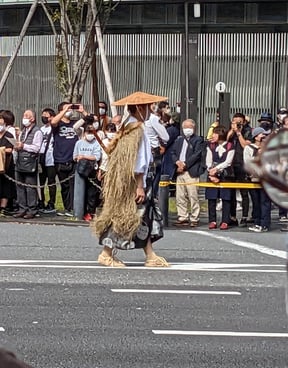

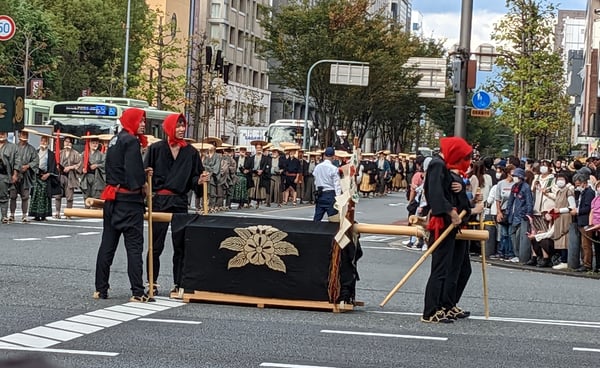

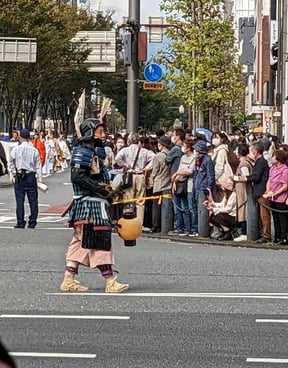

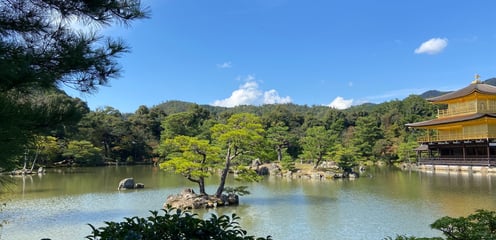

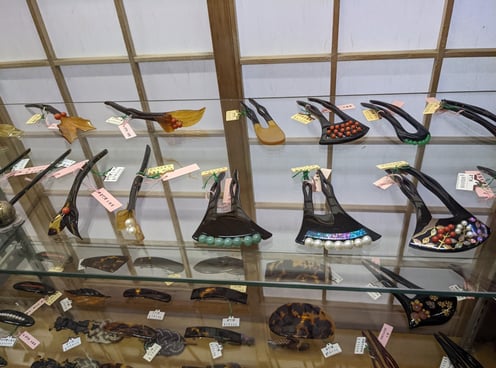

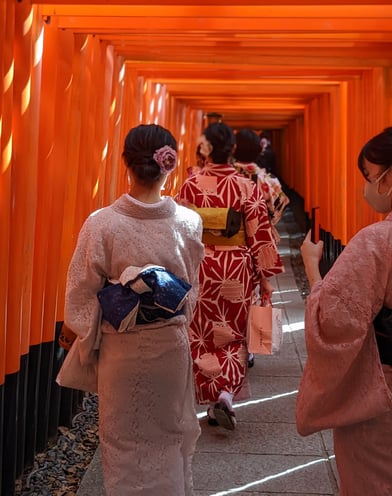

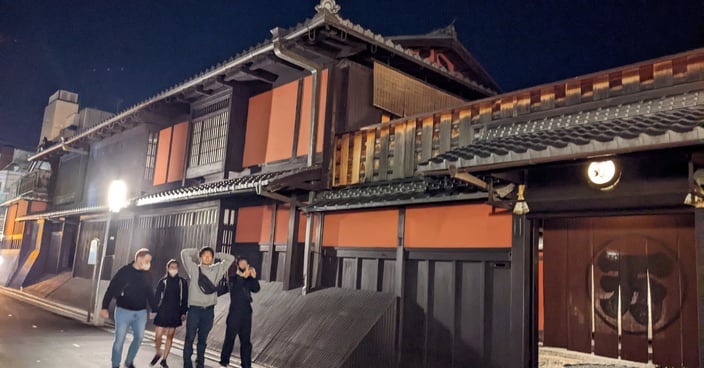

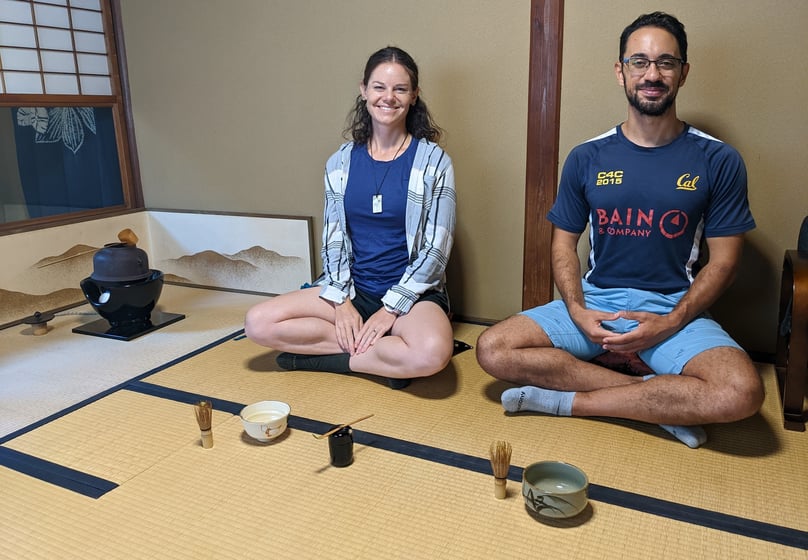

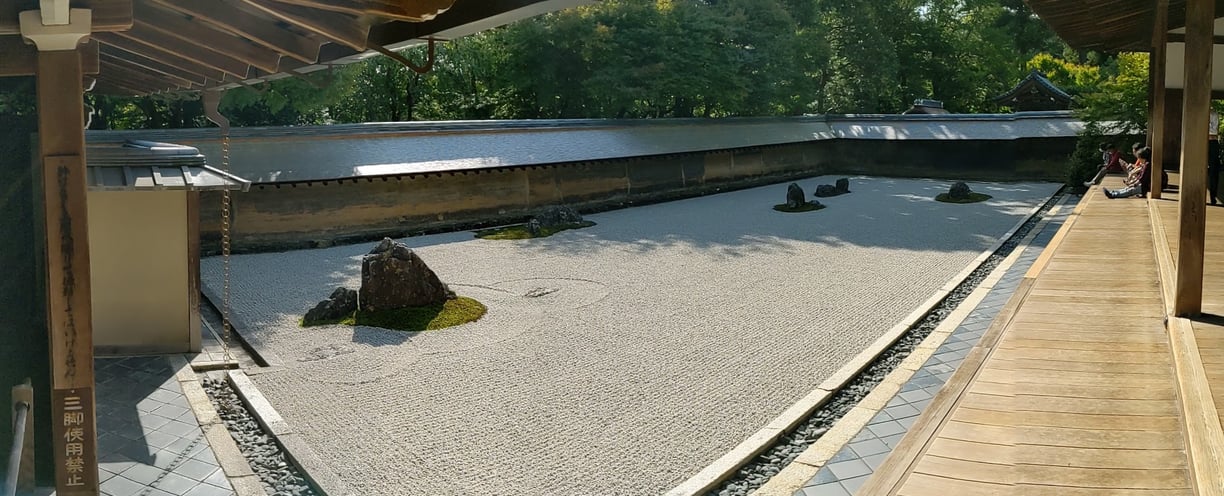

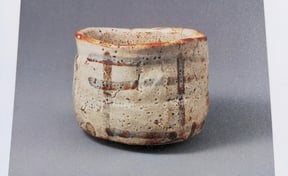

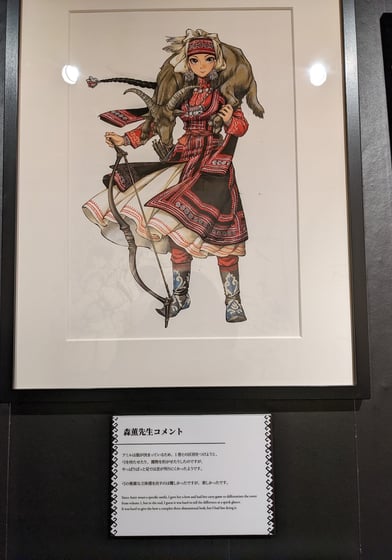

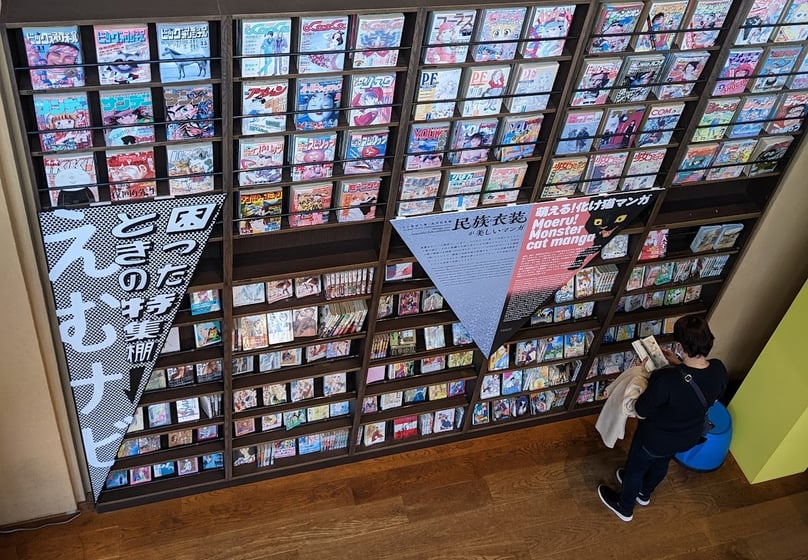

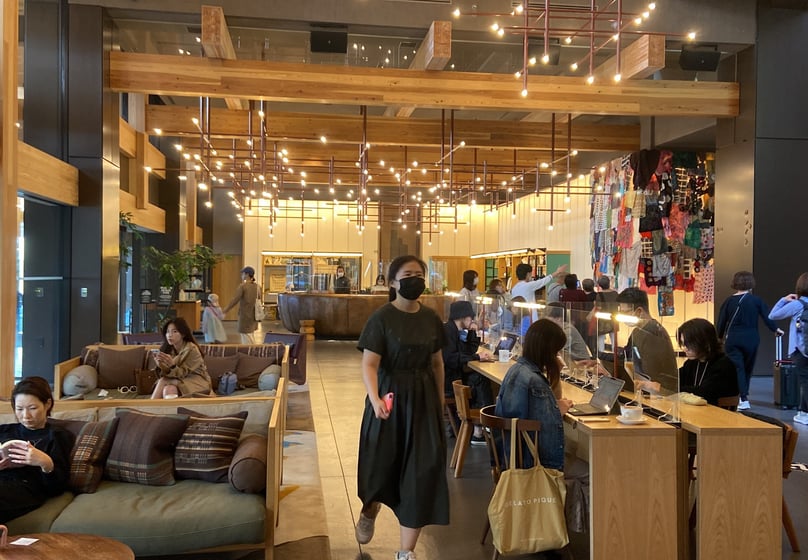



What do you prefer: customs or contemporary? Share your thoughts!
Just three of the hundreds of costumes on display in the Jidai festival parade.
Geisha wear elaborate lacquer and jewel combs in their hair; a pretty penny each and they must have several for each season.
We saw several real life geisha arrive by taxi to this "tea house" but didn't paparazzi enough to get photos.
The famous red gates of Fushimi Inari Taisha. The women pictured are not geisha, just Japanese tourists dressed up in kimono for the occasion of walking the gates.
The "riddle" Zen garden of Ryoan-ji really was worth contemplating! And separately, I wasn't allowed to photograph the most famous of all tea bowls so had to swipe it from a postcard. This tea bowl has its own name, Shino-Chawan UNOHANAGAKI, and is officially considered a National Treasure of Japan.
Above: From the Kyoto International Manga Museum: the original drawing of one contemporary manga artist and the artist's notes about it below; and, a small section of the library of manga available to pick up and read on the museum premises. Below: the marvelous tea, book shop, and sitting area of the gorgeous Ace Hotel.
Shadie and I excelled at stirring our matcha tea properly for the tea ceremony with the frayed bamboo brushes shown here.
